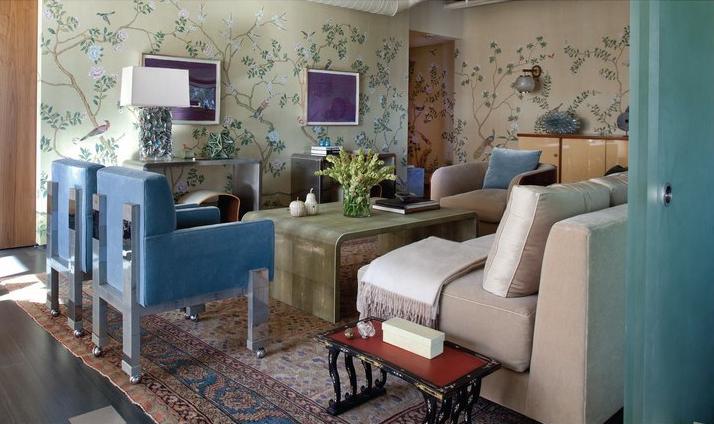 |
| Helena Rubinstein Foundation via FIT |
Helena Rubinstein, the diminutive powerhouse of a women that came from humble means in Krakow, Poland by sheer will and force, transformed herself into "a paragon of good taste and high style." Helena wanted to encourage other women to define themselves as self expressive, self improved individuals, so they may find empowerment.
Helena, not a classic beauty in any sense of the word, had a vision and the instinctual business acumen to understand that at a time when suffragettes were marching down 5th Avenue, women were burning their corsets and becoming more independent and interested in self improvement, that the allure of beauty and working at being more attractive was within every woman's reach. It's not what you are born with that counts, it is what you do with it. She declares,
"There are no ugly women, only lazy ones." :-)
 |
| via Jewish Museum |
Over her lifetime she acquired many beautiful paintings, including commissioned self portraits by renowned artists. Her collection was vast and varied. She favored unknown works by well known artists. I told you she was a savvy business woman. She was as attracted to modern masters as she was to African and oceanic art and sculpture.
 |
| via jewish Museum |
 |
| HR in Japan by Warhol, 1957 |
Picasso's 12 Heads or Madame XIX came about when Madam Rubinstein asked Picasso several times to paint her portrait. Not one to take no for an answer, she showed up at his house one day unannounced and convinced him to do 2 sittings in 1955 (Aug and Nov.) You can see the distain as the portraits or studies evolve. Some remain unfinished (faceless) on purpose. Either way, I thought they were quite stunning!
In her collection, this surrealist painting by Lenor Fini had a huge influence on Helena. It embodied the cultural shift that was taking place at the time; woman replaces man as voyeur.
Beginning with Valaze, a cream she created, Madame Rubinstein, as she then became known, (her 2nd husband was a royal prince) opened salons in Paris and London. She was a visionary and a pioneer when it came to understanding branding and public relations. Everything she did, her homes, her salons, her style, and products all unified the message she wanted to project. "Beauty is Power" became her motto, and she used it in everything from advertisements to product labels.
She employed the best architects and designers of the time to ensure the continuity of the lifestyle brand that became Helena Rubenstein. Her apartments in New York, Paris, and London were used as settings for her photo shoots. Her art collections were shown in her salons; everything was intertwined. She wrote, "I attempted to devise memorable color schemes, select comfortable furnishings, and I chose beautiful paintings from my own collection."
The New York Apartment ~ She tried to buy an apartment but they would not allow Jews, so Madame bought the whole building and made a home for herself in the triplex penthouse. Gotta love that!
 |
| via Helena Rubenstein Foundation, FIT |
Madame Rubinstein was extravagant in all areas of her life. No expense was spared! The walls of her New York sitting room were tufted of satin. She coined the term "quarrel jewelry." Whenever she had a fight with her husband, she bought herself a piece of jewelry. I am not suggesting you adopt that (yes I am, no I'm not, yes I am!)
 |
| In her NY apartment, 1938, Vogue |
 |
| self portrait, Marie Laurencin 1934 |
She kept them filed alphabetically: A for amethyst, D for Diamond, E for Emerald, etc...
The Paris Apartment ~
Her bedroom walls were covered in quilted champagne silk. She believed in the notion of one's home(s) expressing one's personality. However diverse her furniture and art, she juxtaposed disparate periods and managed to create a dynamic collection that expressed her alone. She didn't care!
 |
| via Conte Nast Archive |
 |
| 3 ph. via For Pilar |
Later, it takes a more modern turn ~ a Dali stands guard over lucite chairs she had commissioned in the 1930's.
The Paris Salon ~
In London ~ at 91, she championed a young David Hicks
In a 1945 advertisement she invites women to choose their color palette as if decorating an interior with sample fabric swatches.
 |
| via T Magazine |
Beauty, like art is subjective. Who do we want to project out in the world? How do we want to be seen? Whether we paint our faces, our homes, or wear clothes that express our unique style, Helena Rubinstein blazed a trail, giving women permission to look and feel elegant. Almost 100 years later, we are still trying to embrace our own uniqueness, whatever that looks like.

























































